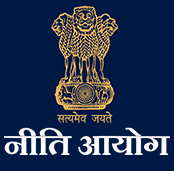Protecting UPI, a jewel among Indian fintech innovations
In March 2022, the Reserve Bank of India made a revolutionary leap in India’s payments ecosystem, launching a version of UPI which can be used on feature-phones. The move will be an influential way forward for bolstering financial inclusion, and bringing more than 40 crore feature phone users into the fold of digital-payments.
With innovation and committed focus, India has achieved remarkable feats in the digital payments ecosystem, which is unparalleled across the globe. In 2020, India surpassed all the other countries in the world, with the highest number of real-time online transactions, and latest market studies now estimate that by 2023, digital-wallet transactions are expected to surpass cash as India’s leading point-of sale. At a macro-level, these are dividends of the Digital India mission which has been driving a wave of transformation in the country.
The UPI factor
In the case of digital payments precisely, a key driver in our growth has been the launch of the United Payments Interface (UPI) in 2017, and its proliferation since then. Since UPI’s launch in 2017, India has been improving financial inclusion at a CAGR of 5%-plus, and since 2018, the country has more than doubled the extent of digitization of payments, as per the extensive Digital Payments Index and Financial Inclusion Index maintained by the RBI.
The effectiveness, agility and potential of the UPI technology has made it a defining force and enshrined itself as the family-jewel of payment-systems in India. The potential and criticality of the technology, however, also makes it important to foster it, and protect it.
One of the prime concerns in technology markets and particularly in UPI has been the fear of market-concentration at an early stage, with few digital-payment platforms acquiring dominance over UPI transactions due to network effects and first-mover advantages.
These were some of the concerns which prompted the National Payments Corporation of India to release a regulation in March-2021 which mandated that no single Third-party payment app can have more than 30% share of overall UPI transactions. As per NPCI, new-entrants will have to adhere to the 30% cap from 2021 onwards, while established players which were exceeding the Volume Cap as of December 2020, will have a period of two years to comply i.e., by December 2022.
Around the time when NPCI had released the regulation, a few digital-payments players alone held a market share of more than 75% in UPI payments.
The imperatives to protect UPI
Payment settlements is a critical area of economic activity, with immense global, societal and domestic impact. The critical role of payments enablement makes it imperative that it has healthy and diverse participation, and it doesn’t fall prey to market-concentration or dominance.
Impact of such dependence has been realized strongly, including allegations against leading App-stores which are allegedly leveraging their dominant position to levy high commission charges to app-developers for payment settlements.
Such concerns need to be insulated in the context of UPI, and prevent a few players from gaining dominance over country’s proprietary high-potential technology.
Analysis of market-trajectories of technology platforms across geographies have strongly reflected that owing to benefits of network-effects and early-mover advantages, it becomes a challenge for new-entrants to achieve a healthy market-share.
This can be realized in the context of UPI payments as well, wherein even when there are about 60 UPI-payment enablers in the country more than 78% in volume and more than 80% in value terms as in February 2022, it still continues to be held by a few digital-payment applications.
It may ironically be a repetition of the market-concentration issue observed in the case of card-payments, which India sought to tackle via the UPI. Therefore, the NPCI’s move to cap UPI payments of individual players at a certain threshold is a step in the right direction.
A prime consideration, presently, should be to ensure that the compliance to the cap prescribed by the NPCI is met by digital-payment companies within the prescribed timeline. Presently that seems to be a distant scenario, considering that between April 2021 and February 2022, the UPI-share of the leading UPI payments app has roughly increased from 45% to 48% (in value) and 44% to 45% in volume, rather than having a gradual decrease.
As UPI continues to scale-up, it’s imperative that NPCI has visibility and strong confidence from digital-payment enablers with respect to their plans for ensuring compliance with the threshold-cap. In-fact, as per the current market-trajectory, under the 30% cap, the UPI market in India may likely be captured by a quadropoly.
Therefore, as the high-potential UPI technology scales-up, it’s critical to ensure that it doesn’t become victim to a quadropoly, and that there is enough market-space for Indian digital-payment companies to proliferate in this Indian-payments technology.
Compliance and aggressive thresholds for the UPI market-share are imperative for India to protect the family-jewel of its payments systems.
Saurabh Thukral is Senior Specialist with Frontier Technologies Vertical and Saloni Sachdeva is a Young Professional at NITI Aayog.
Views expressed are personal.
This article was originally published in BusinessLine
 National Portal Of India
National Portal Of India 







